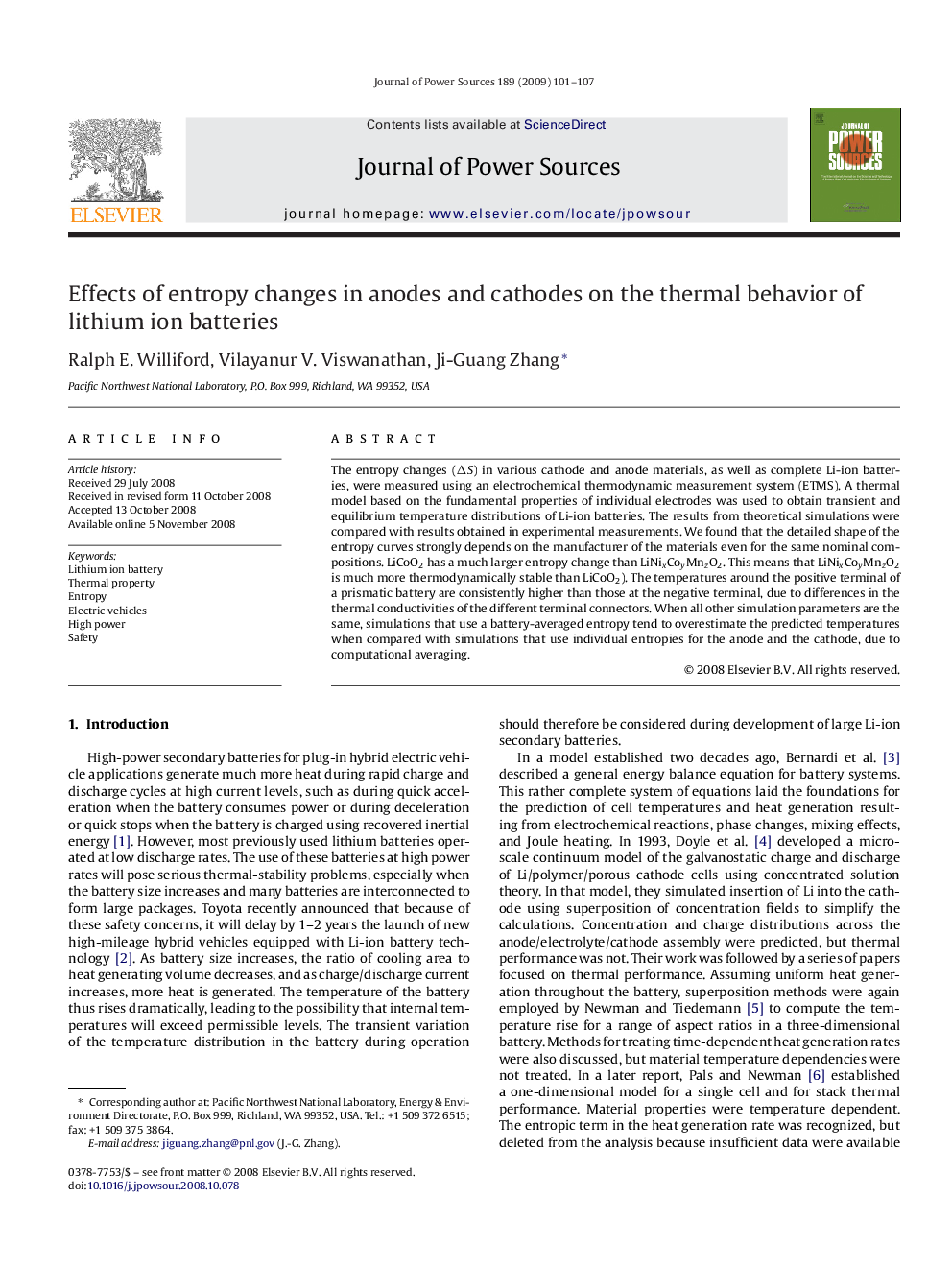| Article ID | Journal | Published Year | Pages | File Type |
|---|---|---|---|---|
| 1291158 | Journal of Power Sources | 2009 | 7 Pages |
The entropy changes (ΔS) in various cathode and anode materials, as well as complete Li-ion batteries, were measured using an electrochemical thermodynamic measurement system (ETMS). A thermal model based on the fundamental properties of individual electrodes was used to obtain transient and equilibrium temperature distributions of Li-ion batteries. The results from theoretical simulations were compared with results obtained in experimental measurements. We found that the detailed shape of the entropy curves strongly depends on the manufacturer of the materials even for the same nominal compositions. LiCoO2 has a much larger entropy change than LiNixCoyMnzO2. This means that LiNixCoyMnzO2 is much more thermodynamically stable than LiCoO2). The temperatures around the positive terminal of a prismatic battery are consistently higher than those at the negative terminal, due to differences in the thermal conductivities of the different terminal connectors. When all other simulation parameters are the same, simulations that use a battery-averaged entropy tend to overestimate the predicted temperatures when compared with simulations that use individual entropies for the anode and the cathode, due to computational averaging.
